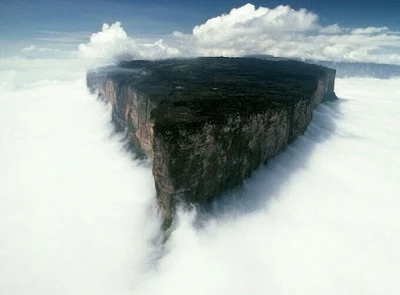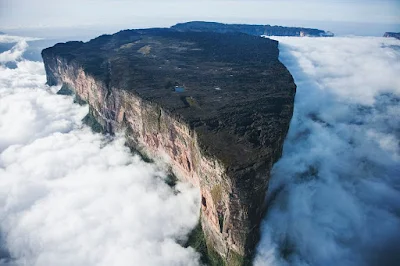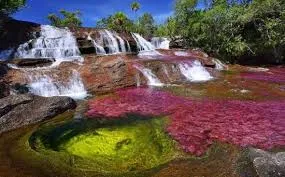Son Doong Cave (Vietnamese: Hang Son Doong) is world's largest cave, located in Quang Binh province, Vietnam. It is found by a local man named Ho Khanh in 1991 and was recently discovered in 2009 by British cavers, led by Howard Limbert. The name "Son Doong" cave means "mountain river cave", It was created 2-5 million years ago by river water eroding away the limestone underneath the mountain Where the limestone was weak, the ceiling collapsed creating huge skylights.
Son Doong Cave is known as the world’s largest natural cave, housing many limestone grottoes, stalactites and stalagmites. Set within Phong Nha-Ke Bang National Park (about 500km south of Hanoi), the cave is a must visit for adventurous travelers looking to explore one of Vietnam’s natural gems during their holiday.
Hang Sơn Đoòng was found by a local man named Hồ Khanh in 1991. The whistling sound of wind and roar of a rushing stream in the cave heard through the entrance as well as the steep descent prevented the local people from entering the cave. Only in 2009 did the cave become internationally known after a group of cavers from the British Cave Research Association, led by Howard Limbert, conducted a survey in Phong Nha-Kẻ Bàng from 10 to 14 April 2009. Their progress was stopped by a large, 60-metre (200 ft) high flowstone-coated wall, which was named the Great Wall of Vietnam. It was traversed in 2010 when the group reached the end of the cave passage
Formed of Carboniferous/Permian limestone, the main Sơn Đoòng cave passage is the largest known cave passage in the world by volume – 38.4×106 cubic meters (1.36×109 cu ft), according to Howard Limbert. It is more than 5 kilometers (3.1 mi) long, 200 meters (660 ft) high and 150 meters (490 ft) wide. Its cross-section is believed to be twice that of the next largest passage, in Deer Cave, Malaysia. The cave runs for approximately 9 kilometers (5.6 mi) and is punctuated by 2 large dolines, which are areas where the ceiling of the cave has collapsed. The dolines allow sunlight to enter sections of the cave, resulting in the growth of trees as well as other vegetation. The cave contains some of the tallest known stalagmites in the world, which are up to 70 m tall. Behind the Great Wall of Vietnam were found cave pearls the size of baseballs, an abnormally large size
To reach Hang Son Doong, it’s a six-km-long hike through the rainforest, which includes passing through a small village that’s home to the Ban Doong ethnic group. Entrance to Phong Nha-Ke Bang National Park costs VND 40,000, plus additional fees (which usually range between VND 80,000 and VND 150,000) to enter the caves via a guided tour. Oxalis Adventure Tours offer a four-day, three-night Son Doong Cave Expedition that’s available between February and August. Priced at VND 68,700,000 per person, the tour is inclusive of camping equipment, safety gear and caving equipment, as well as four meals a day, bottled water, a first aid kit and medical rescue equipment. The expedition also benefits from guidance from a professional technical advisor, an English-speaking guide, five safety assistants, and a porter team to carry gear and prepare meals throughout the journey.
To reach Hang Son Doong, it’s a six-km-long hike through the rainforest,
which includes passing through a small village that’s home to the Ban
Doong ethnic group. Entrance to Phong Nha-Ke Bang National Park costs
VND 40,000, plus additional fees (which usually range between VND 80,000
and VND 150,000) to enter the caves via a guided tour.
Oxalis Adventure Tours offer a four-day, three-night Son Doong Cave
Expedition that’s available between February and August. Priced at VND
68,700,000 per person, the tour is inclusive of camping equipment,
safety gear and caving equipment, as well as four meals a day, bottled
water, a first aid kit and medical rescue equipment. The expedition also
benefits from guidance from a professional technical advisor, an
English-speaking guide, five safety assistants, and a porter team to
carry gear and prepare meals throughout the journey.
Read more at: http://www.vietnam-guide.com/attractions/son-doong-cave.htm?cid=ch:OTH:001
Read more at: http://www.vietnam-guide.com/attractions/son-doong-cave.htm?cid=ch:OTH:001
To reach
Hang Son Doong, it’s a six-km-long hike through the rainforest, which
includes passing through a small village that’s home to the Ban Doong
ethnic group. Entrance to Phong Nha-Ke Bang National Park costs VND
40,000, plus additional fees (which usually range between VND 80,000 and
VND 150,000) to enter the caves via a guided tour.
Oxalis Adventure Tours offer a four-day, three-night Son Doong Cave
Expedition that’s available between February and August. Priced at VND
68,700,000 per person, the tour is inclusive of camping equipment,
safety gear and caving equipment, as well as four meals a day, bottled
water, a first aid kit and medical rescue equipment. The expedition also
benefits from guidance from a professional technical advisor, an
English-speaking guide, five safety assistants, and a porter team to
carry gear and prepare meals throughout the journey.
Read more at: http://www.vietnam-guide.com/attractions/son-doong-cave.htm?cid=ch:OTH:001
Read more at: http://www.vietnam-guide.com/attractions/son-doong-cave.htm?cid=ch:OTH:001
Read more at: http://www.vietnam-guide.com/attractions/son-doong-cave.htm?cid=ch:OTH:001






















































